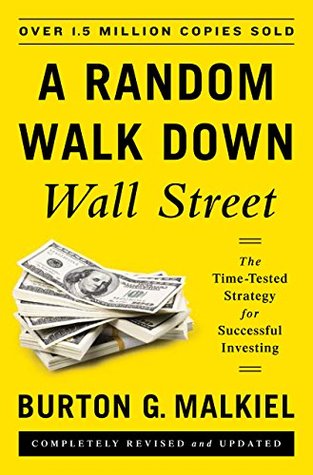More on this book
Community
Kindle Notes & Highlights
Read between
February 24 - March 15, 2018
Rule 4: Trade as little as possible.
With few exceptions, I sell before the end of each calendar year any stocks on which I have a loss. The reason for this timing is that losses are deductible (up to certain amounts) for tax purposes, or can offset gains you may already have taken. Thus, taking losses can lower your tax bill.
If you do want to pick stocks yourself, I strongly suggest a mixed strategy: Index the core of your portfolio, and try the stock-picking game for the money you can afford to put at somewhat greater risk. If the main part of your retirement funds is broadly indexed and your stocks are diversified with bonds and real estate, you can safely take a flyer on some individual stocks,
Even if you use index funds for all your investments, you might choose to alter the weights of various portfolio components in an attempt to enhance returns.
Hence, I believe that investors need to put more China into their portfolios than is available in general world or emerging-market index funds. I am, however, true to my indexing beliefs and think the best way to do it is to buy a broad-based index fund of Chinese companies. Three of them that trade on the New York Stock Exchange are YAO (an index fund representing all Chinese companies available to international investors), HAO (a small-capitalization index fund that contains more entrepreneurial companies and ones with less government ownership), and TAO (a Chinese real estate fund).
If you buy actively managed funds you should look for no-load, low-turnover, low-expense funds with little unrealized appreciation to minimize future tax liability. For bond funds, Morningstar gives data on returns, effective maturity, quality of bonds held, and information on loads and expenses.
With their discounts for the most part dried up at the time this edition goes to press, most domestic U.S. closed-end funds are no longer an especially attractive investment opportunity.† But discounts exist for some international funds, funds investing in emerging markets, and funds investing in municipal bonds.
When discounts of 10 percent or more exist, it is time to open your wallet to closed-end funds.
There is a fundamental paradox about the usefulness of investment advice concerning specific securities. If the advice reaches enough people and they act on it, knowledge of the advice destroys its usefulness.
It is in this sense that I consider myself a random walker. I am convinced that true value will out, but from time to time it doesn’t surprise me that anomalies do exist. There may be some $100 bills around at times, and I’ll certainly interrupt my random walk to stoop and pick them up.
If you feel you must get an investment adviser, make sure that adviser is a “fee only” adviser. These advisers do not get paid for distributing investment products and thus are more likely to make decisions that are completely in your interest rather than in their interest.
If you feel that selecting a properly diversified set of investment products and rebalancing them over time as I have suggested on these pages is too much work, there is a low-cost alternative. I warn you at the outset that the service I am suggesting is one where I am the chief investment officer,
The firm is called Wealthfront. It is the largest and fastest-growing automated investment service. Everything is done online. Wealthfront features a selection of broadly diversified exchange-traded index funds selected to be extremely low cost. The overall investment fee is only ¼ of 1 percent per year, and all brokerage fees are included. Wealth...
This highlight has been truncated due to consecutive passage length restrictions.
Wealthfront actually can provide you with some capital losses that can be used to offset capital gains or capital gain distributions and up to a limited amount can be deducted from your tax bill.
Those timeless lessons involve broad diversification, annual rebalancing, using index funds, and staying the course.
The chart above shows that an investment in the VTSMX (the Vanguard Total Stock Market Fund) did not produce positive returns in the “lost” decade of the “naughties.” But suppose an investor diversified her portfolio with the approximate conservative percentages I suggested on page 369 for the “aging baby boomers.” The diversified portfolio (annually rebalanced) produced a quite satisfactory return even during one of the worst decades investors have ever experienced. And if the investor also used dollar-cost averaging to add small amounts to the portfolio consistently over time, the results
...more
The two most popular forms of financial derivative securities are futures and options contracts.
A futures, or forward, contract involves the obligation to purchase (or deliver) a specified commodity (or financial instrument) at a specified price at some specific future period.
These financial futures are typically settled in cash on the basis of the difference between the initial contract price and the final cash market price of the financial instrument. No physical delivery is made.
A stock option, just as the name implies, gives the buyer the right (but not the obligation) to buy or sell a common stock (or group of stocks) at a specific price on or before a set date.
A put option reverses the situation.


